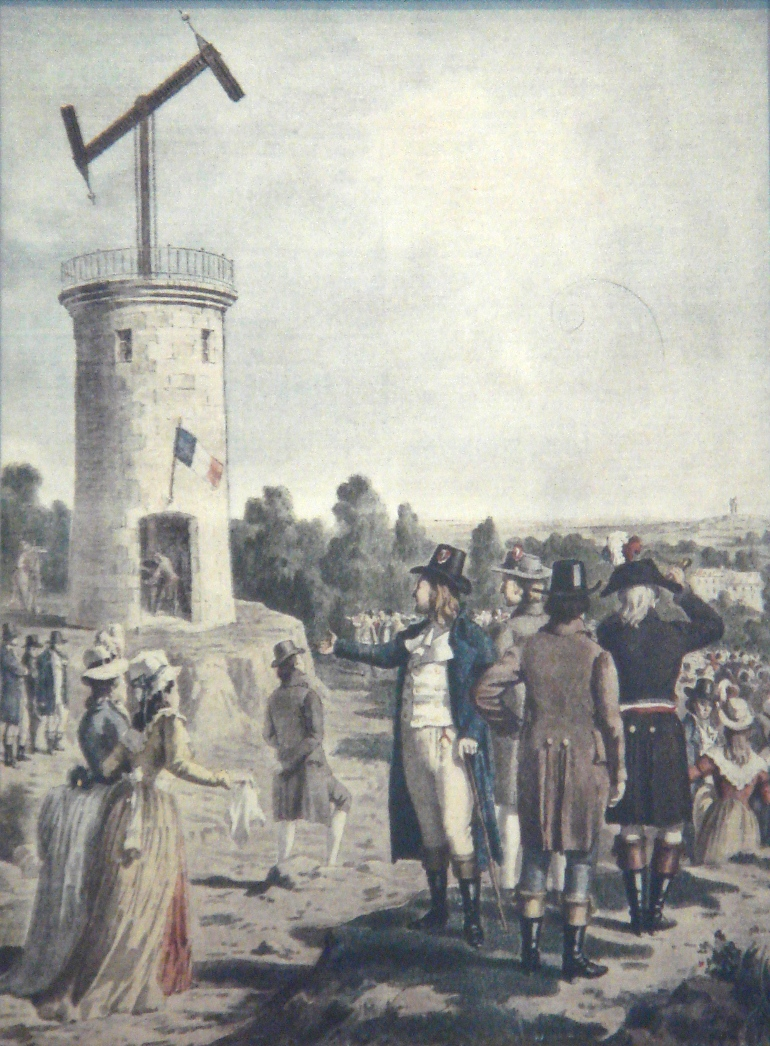The Optical Telegraph
I was reading The Count of Monte Cristo and I stumbled on a discussion between The Count and someone that was working as a telegraph operator. The Count was interested in the ways that the operator was working, and one part of the discussion confused me. The Operator was saying that he works unless there is a holiday, and one of the days that is usually counted as a holiday is a day that is foggy. And I was thinking “what has fog to do with operating a telegraph”. Why do you need clear weather to send telegraphs? So I started googling problems with telegraphs that are caused by fog.
While searching I found out about the Optical Telegraph.
It looks like this and the basic description is this:
An optical telegraph is a semaphore system using a line of stations, typically towers, for the purpose of conveying textual information by means of visual signals. There are two main types of such systems; the semaphore telegraph which uses pivoted indicator arms and conveys information according to the direction the indicators point, and the shutter telegraph which uses panels that can be rotated to block or pass the light from the sky behind to convey information.
It had an alphabet like the morse code for the electrical telegraph, and you could send messages like this.
The most widely used system was invented in 1792 in France by Claude Chappe, and was popular in the late eighteenth to early nineteenth centuries. This system is often referred to as semaphore without qualification. Lines of relay towers with a semaphore rig at the top were built within line of sight of each other, at separations of 5–20 miles (8–32 km).
Here is a map of it for France.
Credit for the first successful optical telegraph goes to the French engineer Claude Chappe and his brothers in 1792, who succeeded in covering France with a network of 556 stations stretching a total distance of 4,800 kilometers (3,000 mi). Le système Chappe was used for military and national communications until the 1850s.
I was reading The Count of Monte Cristo and I stumbled on a discussion between The Count and someone that was working as a telegraph operator. The Count was interested in the ways that the operator was working, and one part of the discussion confused me. The Operator was saying that he works unless there is a holiday, and one of the days that is usually counted as a holiday is a day that is foggy. And I was thinking “what has fog to do with operating a telegraph”. Why do you need clear weather to send telegraphs? So I started googling problems with telegraphs that are caused by fog.
While searching I found out about the Optical Telegraph.
It looks like this and the basic description is this:
An optical telegraph is a semaphore system using a line of stations, typically towers, for the purpose of conveying textual information by means of visual signals. There are two main types of such systems; the semaphore telegraph which uses pivoted indicator arms and conveys information according to the direction the indicators point, and the shutter telegraph which uses panels that can be rotated to block or pass the light from the sky behind to convey information.
It had an alphabet like the morse code for the electrical telegraph, and you could send messages like this.
The most widely used system was invented in 1792 in France by Claude Chappe, and was popular in the late eighteenth to early nineteenth centuries. This system is often referred to as semaphore without qualification. Lines of relay towers with a semaphore rig at the top were built within line of sight of each other, at separations of 5–20 miles (8–32 km).
Here is a map of it for France.
Credit for the first successful optical telegraph goes to the French engineer Claude Chappe and his brothers in 1792, who succeeded in covering France with a network of 556 stations stretching a total distance of 4,800 kilometers (3,000 mi). Le système Chappe was used for military and national communications until the 1850s.
